COVID-19 And The Passenger Shipping Industry
Ever since Covid-19 was reckoned and became a pandemic in March 2020, the entire world has been grappling with an unprecedented crisis in the 21st-century new order.
With the tourism, hospitality and transportation business bludgeoned in a great way, it goes without saying that the passenger shipping business has not escaped the fangs of this global debacle fomented as a result of this egregious pandemic.
The passenger shipping industry, though not a “near-rival’ of the aviation industry, too has a considerable amount of contribution to the GDP (up to 5-6%) in terms of the transportation sector of several nations.
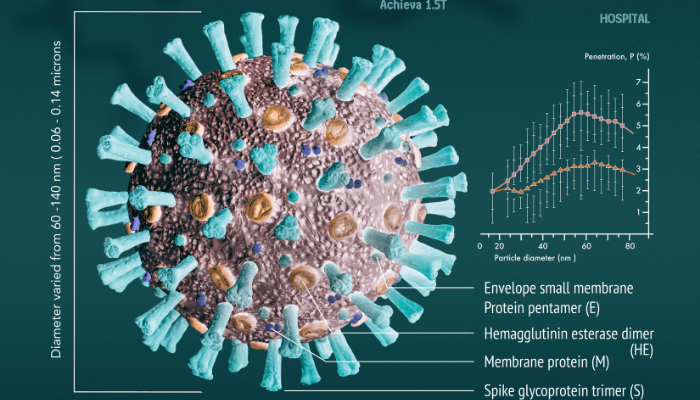
As soon as the pandemic broke out ubiquitously all around the globe, it took its toll on the passenger shipping or cruise industry. Several passengers onboard became marooned due to curbed restrictions at several ports all around the globe.
Soon after in several ships, many passengers had become infected by the virus resulting in further delay and ships becoming temporary quarantine centres for many.
With CDC in the United States and other several governing bodies all around the world issuing “no-sail” order for ships in order to contain the already ensuing restrictions all around and cut down on the rate of contagion due to overseas travel of people.
In the current scenario, almost all the ships around the world have returned safely to their destination ports and as of now, the resumption of services seem bleak in the near future to the effect citing the widespread escalation of the virus all around the globe.
So, it goes without saying that the $ 45 billion industry encompassing more than 20 million passengers worldwide annually has suffered a massive debacle amounting to a loss of a few billion dollars already.
Contagion In Cruise Ships Around The World
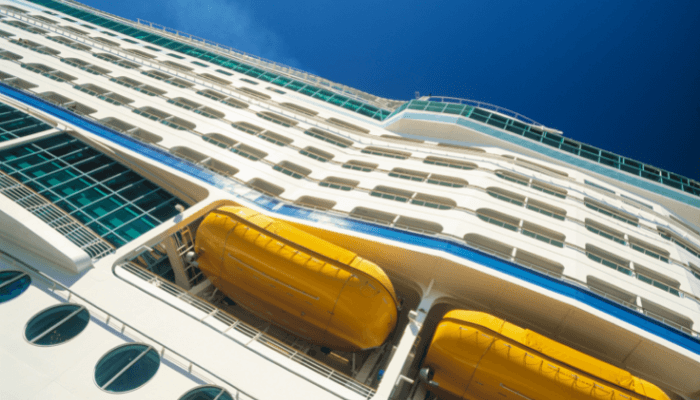
As per official data, as of now, nearly 50 registered passenger vessels all around the globe reported cases of COVID-19 outbreaks on-board in varying amounts.
Diamond Princess, under the flag of United Kingdom, was the first reported ship to have a humongous coronavirus pandemic on-board at an alarming rate of 700 infections and 14 deaths, the vessel being quarantined for a month off the Yokohama Port in Japan.
This ship was the hotspot for the virus and on a statement on 26th February WHO asserted that this accursed ship accounted for more than half of the COVID-19 cases outside of China at that time.
In Australia, another vessel Ruby Princess became a serious epicentre. As per the U.S Centre for Disease Control and Prevention (CDC) and other medical bodies, cruise ships may even pose a higher risk of contagion than flights or other modes of transportation due to the high “density” and clustering of passengers, even larger than a civil area of “an average city”.
Surveillance by CDC has shown that reducing or whittling down the number of passengers on-board may not completely end the problem, unlike flights.
Further observations by other bodies have substantiated that the ships having a coronavirus outbreak in any amount were mostly large ships and significantly were ‘round-trip’ charters, i.e. having the same port of call in arrival and departure (as opposed to a single port of call) within a span of a week.
Moreover, ships that continued to ply till March when the pandemic had snowballed into an elephantine scale were more or less affected. Data has also shown that larger ships, as expected, were mainly the ones affected by the viral wrath.
The United States, which has the largest number of COVID cases in the world also had a large number of cruise ships. However, countries like Italy and France, which too had an alarming outbreak of the pandemic, did not have a large number of oncoming vessels. So, this particular relation may not be strictly true.
One serious lacunae in cruise ships till date is the huge passenger: crew/personnel ratio. So, as a result, the earmarked guidelines and yardsticks for assessment, regulation and enforcement is not up to the mark in most cases. These loopholes can have a detrimental impact on these kinds of calamities resulting in a burgeoning contagion.
Also as seen for the ships still plying in March, when the contagion started to pick up, many countries were still somewhat lackadaisical in regulating the oncoming passenger ships which were a great source of the spread.
Consequently, the contagion took a more egregious shape. As seen for this pandemic, it has spread like wildfire mainly from foreign travellers in the annals of the society. So, it won’t be much erred to say that along with flights, ships did play a pivotal role in which a humongous number of people in the world is still paying the price.
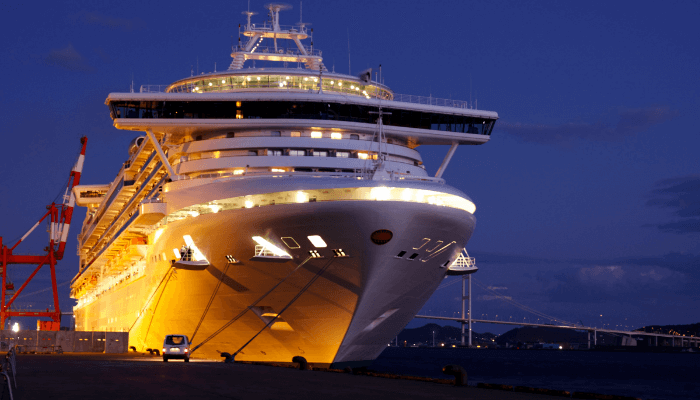
Soon after the situation became worse, nations began pulling up their socks for cinching the unbridled spread of the virus. It also became a nightmare for the cruise liner companies who had to work racing against time to quarantine many ships afloat, suspend operations as well as negotiate or even beseech nations to work out a plan for safe docking, transportation and quarantine of passengers.
In the quarantined ships afloat, isolation and containment of infected and prone passengers and crew posed to be a challenge along with other pressing issues like rations, supplies, medicines, sanitization measures and most of all the skyrocketing overhead costs incurred when the fully loaded ship remains stranded for an indefinite period of time.
Repatriation of passengers adopted by many cruise liners also incurred hefty costs. However, delaying them led to increasing tensions amongst passengers and crew, and in a few cruise ships, there have also been reports of suicides or attempts of suicides.
In several instances, the liners were also directed to take upon the responsibility of onshore containing passengers in facilities. The process of refunds and cancellation policies on an unprecedented scale also took a heavy repercussion on the companies’ funds.
Docking restrictions were imposed by many countries, the first ones being India, Seychelles, Canada, New Zealand and Australia. In the first half of April, almost 10% of the total COVID-19 cases in Australia were attributed to the Ruby Princess itself! Countries like Seychelles have suspended all cruise ship operations till 2022!’
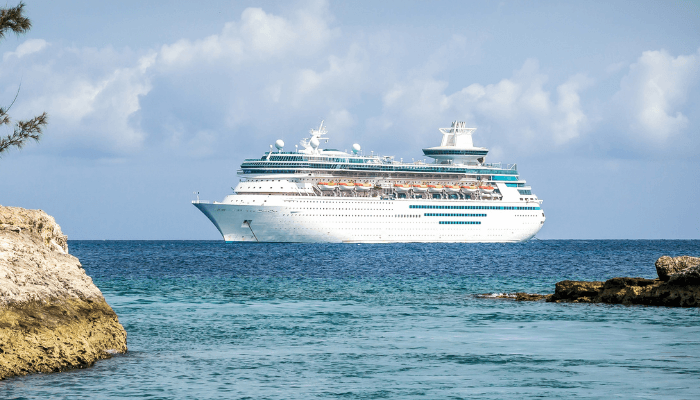
Government advisories were also propagated on a large scale with several nations like Germany, UK, New Zealand have strictly advised against the usage of the cruise ship for international travel, at least for the time being.
The United States Government along with the CDC have highlighted the risks of travelling on cruise ships in the current scenario and have advised passengers to preferably use “private transportation” instead of public transportation like trains or commercial flights as per an advisory dated 6th April 2020. Several cruises have temporarily ceased operations.
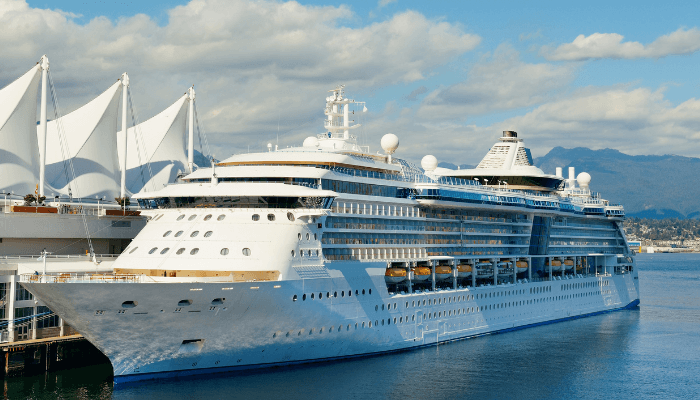
The Aftermath And The Way Ahead
Now the main question that arises is: What lies ahead?
It goes without saying that with the net GDP of the world contracting by more than 5% and the pandemic engendering the ‘largest economic recession’ on the world till date, the passenger shipping industry has suffered a huge bludgeon.
The stock prices of major cruise liners fell by 70-80% due to unbearable losses incurred as a result of factors already mentioned.
Another major blow to shipping companies operating to and from the United States is their outright exclusion from the 2 trillion dollar coronavirus relief package passed by the U.S. Congress and signed by President Trump under the United States law citing their inability to be a part of “organized” companies along with their non-payment of some crucial taxes to the government.
Even though other forms of long-haul transport may soon resume operations, it is highly uncertain when will cruise ships resume operations.
Even though they resume, regaining passenger base for travel remains a herculean challenge for almost all companies in the light of the serious outbreak onboard ships and reported mismanagement in many cases.
Also, the stringent laws for “social distancing” enforced by bodies drastically implies a lesser number of passengers on resuming operations, perceived as a severe blow by several companies.
So the pressing question arises: How can this industry gain new lungs after this cavernous pandemic which has beleaguered the world?
As air travel continues to be chief form of transportation for international travel, the time taken for this industry to revive will inevitably be even more. And as in the shipping industry, time is money, more losses have to be incurred in the balance sheets.
High care should be taken to revamp the business in such a way that for at least 1-2 fiscal years, the profit must at least suffice to make up for the huge loss since a positive profit at this moment seems too far-reaching and over-optimistic. So, ‘survival is the greatest profit’ in the case of cruise/ passenger ships at least for the next 2-3 financial years. What can be the fundamental means in doing so?
● Trust. Any forms of service to the common public stands on the cornerstones of trust and goodwill. It is upon the passenger ship companies to take upon the “do or die” onus for reinstating as well as ameliorating the factor of trust amongst its potential passengers.
● Following the Accident of Costa Concordia in 2012, there was a huge wave of apprehension and distrust amongst passengers to travel in cruise ships. Post the coronavirus outbreak this year, this scathed trust in the process of refurbishment over the last few years has gone for a total toss.
So, irrespective of the time it should take, all cruise ship liners should work very hard to ‘damage-control’ on this trust and then start rebuilding it afresh. And it goes without saying that trust is innately composed of aspects like safety, security and service.
In this post-Covid world, any passenger who opts for travelling to any place in any mode of transportation will weigh upon the risks after optimising his or her budget and exigency. So, the liner must take scrupulous measures to take all measures in terms of safety, hygiene and low risk of contagion. This is again briefly reiterated later in the article.
Other indispensables of trust also include obvious aspects like comfort, hospitality, seaworthiness, care, attention and responsiveness. So, quality assurance is an ineluctable part of building trust. As customer satisfaction remains the foremost concern, some of the underlying aspects in terms of enhancing greater passenger satisfaction are as follows:
▪ Passenger Safety. The passenger shipping business in the new world should strive not to leave any stone unturned in ensuring passenger safety and sanctity.
Passenger safety ranges from a wide range of aspects from health and hygiene, a humongous concern in the aftermath of this deadly pandemic, to cleanliness and security of luggage, belongings and most importantly, lives.
All these factors are intertwined with each other as it is expected that a sound service of a liner is expected to cater to the basic amenities of every single passenger irrespective of their class of travel, sex, age, ethnicity and origin from ensuring hygiene in food, clean water (both for drinking and other usage), accommodation etc. to having foolproof security of their belongings.
Special rules must be enforced to ensure proper safety of women against all forms of crimes. Discrimination of passengers based on race and caste should be condemned and strictly subjugated to action.
After these comes the safety of the vessel as a whole though that, like any other modes of transportation is solely a factor of the ship structure, handling, operations, navigation, climatic and sea conditions, design, construction and as a matter of fact, also on “luck” however, pragmatists may deny it.
However, after the very recent disaster of Costa Concordia in 2012, IMO has resolved much more scrupulous guidelines in terms of design like the damage stability of compartments, like the sustainability of the vessel even after the damage of 2 or more compartments, structural reinforcement and so on. Stability-based design is being given more importance by the designers to eradicate the feasibility of capsizing of passenger ships with high superstructures.
As per an assertion by the International Commission on Shipping (ICONS), most of the accidents on ships are chiefly caused by two elements of human factors:
i) Fatigue ii) Non-compliance of operational guidelines.
In the past, several accidents have been caused by human negligence, most tantamount to fatigue of the operational personnel. So, newer norms need to be implemented assiduously such that personnel are not overworked and the guidelines for safer operation are religiously followed to diminish the chances of human error.
Regulations by bodies such as the National Transport Safety Board (NTSB), CDC, IMO etc. are a must without any room for relaxation.
▪ Health and Hygiene: In the so-called ‘New World’ after the egregious pandemic, this vertical remains a matter of huge primacy and exigency. Reportedly, as the COVID-19 virus spread all around the world like wildfire as people carried arsenals of these molecular machines in planes and cruise ships, the guidelines governing the rules of long-haul travel is and further will be implemented on a ubiquitous scale to whittle the spread and curtail future instances in the best way feasible.
It would not be very wrong to say that we ourselves along with the concerned bodies are greatly responsible for this debacle. Notwithstanding the regulations and stipulated guidelines by authorities, many cruise ships didn’t take adequate measures for proper isolation, treatment and assessment of passengers and crew.
Lack of proper medical infrastructure has also resulted in deaths. So, in the post-Covid realm, all cruise liners have to be very pedantic in their approach. It is expected that Cruise liners will be expected to work more closely with public health authorities worldwide and CLIA (Cruise Lines International Association) to enforce health requirements.
From facilitating the proper screening of passengers before boarding, sanitization and disinfection measures to invoking state-of-the-art facilities for treatment, and diagnosis on-board, the steps to be implemented are numerous.
In the case of a COVID-infected patient, all necessary steps for safe containment should be implemented with wartime exigency. Competent facilities for hospitalization is a new challenge for all cruise ships. As per 1996 ICCL Guidelines, hospitals need to be kept per 1000 passengers and crew and with the inset of this pandemic, this may be expedited to the best form by any liner.
Intensive Care Units (ICUs) need to be increased on-board.
Frequent checks on crew and personnel must be mandatory. Food Safety is an indispensable vertical that should be given the highest priority.
Kitchens and Galleys must be sanitised regularly along with ensuring proper quality and hygiene of food being prepared. Disposition of waste and sewage is another crucial aspect for any passenger ship.
As they can be potential sources of infection, proper disposition is a subject of great importance for any vessel. Minimising on-board accumulation and keeping in mind the norms for environmental pollution in line with IMO guidelines should be optimised in a holistic way.
On-board treatment of sewage should be given paramount importance. Disposition anywhere near land is a dangerous aspect since the sewage of a virus-affected ship can be potential catalysts in aggravating a large-scale outbreak on land.
Bodies like WHO, CDC, EU have already released guidelines on the modified form of travel post-COVID on passenger ships. The most comprehensive ones as of now have been by the EU in conjunction with the European Centre for Disease Prevention and Control (ECDC) that provides three-fold guidance on the pandemic crisis.
The first part encompasses the liner company and stresses a holistic ship management plan.
It involves everything from a detailed risk assessment of passenger and crew to measures to be adopted as the sole responsibility of the company.
The second part invokes the guidance for a management plan for the port/terminal/harbour that is at the receiving end of the arriving ships. This is for the personnel at this end to be guided with all the necessary regulations for dealing with oncoming maritime traffic and the disembarking passengers along with enforcing safety measures and surveys.
The third part involves the consensus between the company and the port/terminal at the arrival and departure points. They must jointly co-ordinate and share their COVID-19 mitigation plans for a holistic approach in ensuring maximum safety of personnel and passengers and checking on contagion for a smoother restart of cruise ship operations.
It is expected that more such guidelines come up in the near future.
● Economy: As the passenger shipping industry is grappling with the acute financial setback in the wake of this pandemic, it must work out ways to at least make up for the overbearing losses before envisioning a profit.
For that, we need to consider that income of a ship liner is from two major sources: ticket sales of passengers (62%) and on-board revenue (38%) (Source: KPMG).
As ticket sales are on a heavy dwindle, they need to capitalise on the second part which compromises on everything from liquor, excursions, casinos, recreation, lifestyle, retail, stores etc. They must tighten their alliance with smaller countries such as the Caribbean countries, whose 5-6% GDP and livelihood is dependent on the cruise ships as they influence their tourism and hospitality industry.
So, that can be a win-win scenario for both as their economy is also jeopardised as a result of the pandemic’s toll on the cruise ship industry. Many cruise liners are also adopting the policy of offering bonus credits (110-115 % of the booking amount) instead of refund for future trips. This is having a positive response. Many passengers are indeed considering trips in 2021-22 when the pandemic is expected to wane.
A ray of light in the drab scenario of the passenger shipping industry is the slumping oil prices worldwide. These can ease up a bit on the operating costs of the liner keeping the ticket prices the same. Also, it is mandatory for the liner companies to work on newer strategies like any other business to recover from this debacle.
Reworking on the balance sheets is being taken on by companies with high priority. From advertising to marketing, they should leave no stone unturned in bolstering the mechanism of refurbishment of its operations.
At this juncture, it can also be a viable option for liners to check the feasibility of converting some vessels to medical facilities as several countries continue to face the critical dearth of adequate medical infrastructure as existing ones are overburdened in the event of this public health catastrophe.
But there is always a silver lining on the cloud. With the world soon to make its way out of this skein of economic despair, it may be expected that the passenger shipping industry does that too.
According to CLIA, the cruise shipping industry is the source of livelihood for almost 50,000 people in the United States. And traditionally, it is the oldest form of transportation with a legacy.
On the brighter side, TUI Cruises resumed operation with Mein Schiff 2 departing from Hamburg on 24th July 2020. Hopefully, more will do.
You may also like to read –
- Fighting Coronavirus On Ships – Steps Seafarers Should Take
- Why The Oil Tanker Business Boomed During COVID-19 Pandemic?
Disclaimer :
The information contained in this website is for general information purposes only. While we endeavour to keep the information up to date and correct, we make no representations or warranties of any kind, express or implied, about the completeness, accuracy, reliability, suitability or availability with respect to the website or the information, products, services, or related graphics contained on the website for any purpose. Any reliance you place on such information is therefore strictly at your own risk.
In no event will we be liable for any loss or damage including without limitation, indirect or consequential loss or damage, or any loss or damage whatsoever arising from loss of data or profits arising out of, or in connection with, the use of this website.
Disclaimer :
The information contained in this website is for general information purposes only. While we endeavour to keep the information up to date and correct, we make no representations or warranties of any kind, express or implied, about the completeness, accuracy, reliability, suitability or availability with respect to the website or the information, products, services, or related graphics contained on the website for any purpose. Any reliance you place on such information is therefore strictly at your own risk.
Do you have info to share with us ? Suggest a correction

About Author
Subhodeep is a Naval Architecture and Ocean Engineering graduate. Interested in the intricacies of marine structures and goal-based design aspects, he is dedicated to sharing and propagation of common technical knowledge within this sector, which, at this very moment, requires a turnabout to flourish back to its old glory.
Latest Maritime Knowledge Articles You Would Like:
Subscribe To Our Newsletters
By subscribing, you agree to our Privacy Policy and may receive occasional deal communications; you can unsubscribe anytime.















